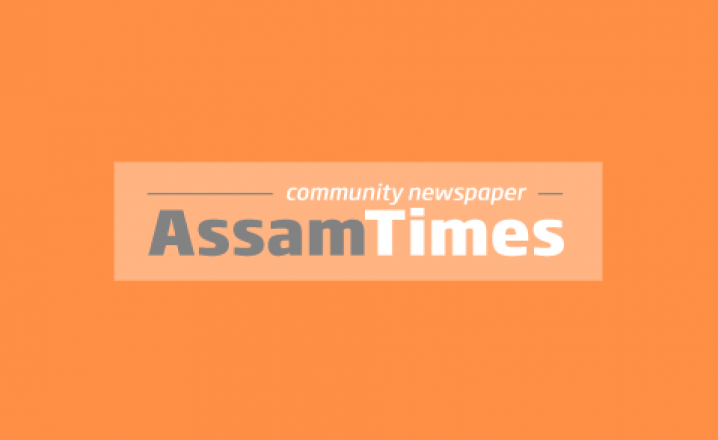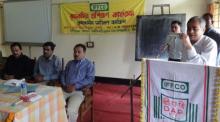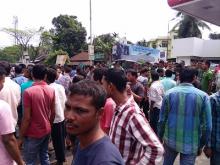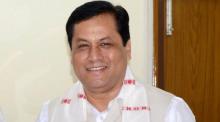Music the fiercest grief can charm,
And fate’s severest rage disarm,
Music can soften pain to ease,
And make despair and madness please,
Our joys below it can prove
And antedate the bliss above…….
Throughout ages, music has played a significant role in the life of every human being. Numerous legends and myths have been preserved from ancient times testifying to the power of music over man. The supernatural power of instruments was referred in the Old Testament, the instance of trumpet blasts causing the walls of Jericho to collapse. According to an Indian legend, the people of Bengal were saved from famine during a period of drought by a singer whose voice brought rain from the skies. Like other artists throughout the ages, men who created music have been conditioned by the style and the tastes of the age in which they live in. Folk songs or the songs of the masses are spontaneous songs composed and sung by the common people long ago, commemorating personal experiences of everyday life or common events, or characters of local interest. It is impossible to trace those who are responsible for the ballads and the lyrics, the songs of the seasons and the soldiers’ song, the songs of the hunt and chase that go to form a nation’s folk music.
Folk music carries the distinctive identity and tradition of the rural people so some scholar likes to refer to it as traditional music. Its relation to the society stands in close stead with the season, rituals, ceremonial practices or occupational activities and leisurely occasions when groups of people try to relieve themselves of the pain of daily manual labor. Folk music is product of unsophisticated people living far away from the threshold of modern civilization. The songs have no authorship as the composer merely depicts the sentiments of the masses and so the folks accept it as their own without any hesitation.
The evolution of folk music and instruments cannot be ascertained to a certain period. However, it is believed that with the birth of human beings on earth, music, too, was born. However, this by itself does not mean that the awareness towards the culture of music developed with the advent of man in this earth.
The simple shouts of the primitive man, the claps, chest beating, foot stamping, the power believed to cure sickness, the power to invite rain to make crops grow have been the seeds of music planted in the virgin land that through the ages, has sprouted to a harmonious musical tree that we hear today.
However, the primitive man was unaware of the fact that he was the sole possessor of this innate property of aesthetic quality and music, in its infant stage, was in a very crude form, devoid of any techniques or technical mediums of expression. In the course of human intellectual development, these simple bodily expressions of the primitive people turned into a complex form of art….the Art of Music…that exists today.
Perhaps the first musical instrument to be made by man was the drums. The history of the drum goes back a long way. All kinds of civilizations have used drums or similar instruments to make music, to warn of danger or to instruct their armies. Usually the drum was the perfect choice for such tasks, because a drum can be made easily, makes a lot of noise and can be heard very clearly.
Nevertheless, today with the advent of unaccountable electronic gadgets there has been a drastic change in the life of human beings, not only in their day-to-day lives but also, in every aspect of their vision. In the field of music, this change is very evident. The simple folk music of the bygone days no longer exudes the sweet smell of simplicity but a complex synthesis of modern human mind.
But what does electronic music signify? Does it mean just the music in which various musical ideas are recorded on tapes or such electronics gadgets and subsequently reproduced by electro-acoustical means, the performance thus being the playback of the same? To be precise it is more complex then it sounds!
The composition of electronic music began during the early 1960s. Originally, electronic music referred to just the music that is produced by electronic means, using instruments such as the synthesizer as opposed to the sounds that are produced by conventional acoustic musical instruments or natural noises. However, the distinction between conventional music and electronic music has now disappeared with has resulted in both becoming a mere identity of modern age.
The introduction of the synthesizer in the 1960s made it much easier for musicians to practice electronic music, for all the methods of producing and transforming sounds were available in a single machine. Gone are the days when the twang of the hunters bow or the simple foot stamping of the peasant, planted the seeds of music. Today, with the advent of electronic instruments, music has become more complex in rhythm and harmonies, than it used to be before.
Considering all the aspects of these inevitable changes, it can be easily gauged that there is a huge scope for musicians and music enthusiasts in the region to start work on an entirely new area of research. A study on these lines will go a long way in helping the present day musicians understand the basic nuances of music and also motivate them to try experiment with folk music to develop a new genre of fusion. It will also help in the enumeration of all forms of electronic media that has been used till date in producing music.
And fate’s severest rage disarm,
Music can soften pain to ease,
And make despair and madness please,
Our joys below it can prove
And antedate the bliss above…….
Throughout ages, music has played a significant role in the life of every human being. Numerous legends and myths have been preserved from ancient times testifying to the power of music over man. The supernatural power of instruments was referred in the Old Testament, the instance of trumpet blasts causing the walls of Jericho to collapse. According to an Indian legend, the people of Bengal were saved from famine during a period of drought by a singer whose voice brought rain from the skies. Like other artists throughout the ages, men who created music have been conditioned by the style and the tastes of the age in which they live in. Folk songs or the songs of the masses are spontaneous songs composed and sung by the common people long ago, commemorating personal experiences of everyday life or common events, or characters of local interest. It is impossible to trace those who are responsible for the ballads and the lyrics, the songs of the seasons and the soldiers’ song, the songs of the hunt and chase that go to form a nation’s folk music.
Folk music carries the distinctive identity and tradition of the rural people so some scholar likes to refer to it as traditional music. Its relation to the society stands in close stead with the season, rituals, ceremonial practices or occupational activities and leisurely occasions when groups of people try to relieve themselves of the pain of daily manual labor. Folk music is product of unsophisticated people living far away from the threshold of modern civilization. The songs have no authorship as the composer merely depicts the sentiments of the masses and so the folks accept it as their own without any hesitation.
The evolution of folk music and instruments cannot be ascertained to a certain period. However, it is believed that with the birth of human beings on earth, music, too, was born. However, this by itself does not mean that the awareness towards the culture of music developed with the advent of man in this earth.
The simple shouts of the primitive man, the claps, chest beating, foot stamping, the power believed to cure sickness, the power to invite rain to make crops grow have been the seeds of music planted in the virgin land that through the ages, has sprouted to a harmonious musical tree that we hear today.
However, the primitive man was unaware of the fact that he was the sole possessor of this innate property of aesthetic quality and music, in its infant stage, was in a very crude form, devoid of any techniques or technical mediums of expression. In the course of human intellectual development, these simple bodily expressions of the primitive people turned into a complex form of art….the Art of Music…that exists today.
Perhaps the first musical instrument to be made by man was the drums. The history of the drum goes back a long way. All kinds of civilizations have used drums or similar instruments to make music, to warn of danger or to instruct their armies. Usually the drum was the perfect choice for such tasks, because a drum can be made easily, makes a lot of noise and can be heard very clearly.
Nevertheless, today with the advent of unaccountable electronic gadgets there has been a drastic change in the life of human beings, not only in their day-to-day lives but also, in every aspect of their vision. In the field of music, this change is very evident. The simple folk music of the bygone days no longer exudes the sweet smell of simplicity but a complex synthesis of modern human mind.
But what does electronic music signify? Does it mean just the music in which various musical ideas are recorded on tapes or such electronics gadgets and subsequently reproduced by electro-acoustical means, the performance thus being the playback of the same? To be precise it is more complex then it sounds!
The composition of electronic music began during the early 1960s. Originally, electronic music referred to just the music that is produced by electronic means, using instruments such as the synthesizer as opposed to the sounds that are produced by conventional acoustic musical instruments or natural noises. However, the distinction between conventional music and electronic music has now disappeared with has resulted in both becoming a mere identity of modern age.
The introduction of the synthesizer in the 1960s made it much easier for musicians to practice electronic music, for all the methods of producing and transforming sounds were available in a single machine. Gone are the days when the twang of the hunters bow or the simple foot stamping of the peasant, planted the seeds of music. Today, with the advent of electronic instruments, music has become more complex in rhythm and harmonies, than it used to be before.
Considering all the aspects of these inevitable changes, it can be easily gauged that there is a huge scope for musicians and music enthusiasts in the region to start work on an entirely new area of research. A study on these lines will go a long way in helping the present day musicians understand the basic nuances of music and also motivate them to try experiment with folk music to develop a new genre of fusion. It will also help in the enumeration of all forms of electronic media that has been used till date in producing music.







Add new comment